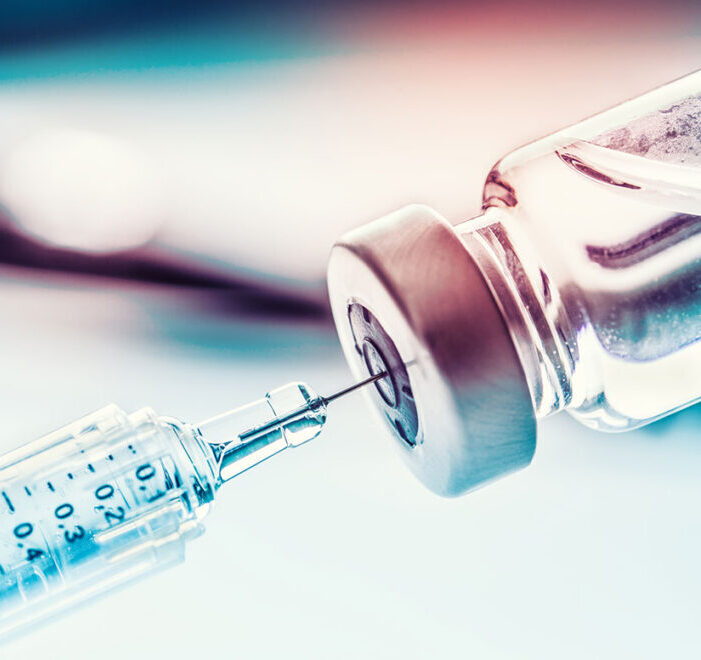States Leverage Medicaid to Provide Nursing Homes a Lifeline through COVID-19
Note: Article originially published April 27, updated May 20 and June 12.
Nursing homes are on the front lines of COVID-19 and are faced with unprecedented challenges in providing care to residents through the pandemic. As a result, many nursing homes face financial strain and require enhanced resources to care for their residents. Federal action, such as the HHS Provider Relief Fund and the CMS Medicare Part A Advance Payments, have provided some financial support to nursing homes, and states are stepping up as well to supplement these emergency funds.
As of June 12, LeadingAge has identified several states that have taken some action, most through the Medicaid program, to direct increased funding to nursing homes. Most states have used the Medicaid state plan amendment process to secure rate increases for these providers. In many cases, rate increases are based on how much Medicaid paid nursing homes before the pandemic. Rhode Island, Connecticut and Oregon, for example, have each increased their Medicaid nursing home rates by 10% through the COVID-19 pandemic. Other states provide add-on payments at a flat rate, such as Alabama ($20 per day) and Washington ($29 per day). In addition to Medicaid rate increases, states have appropriated or otherwise directed funds to support nursing facilities and other health care providers, such as Massachusetts and Minnesota.
It is notable that Medicaid historically has not paid nursing homes (or other aging services providers) for the full cost of care to the people they serve. This shortfall in Medicaid rates likely exacerbated the financial strain on Medicaid providers like nursing homes as the pandemic began and underscores the need for enhanced federal and state support to this group. LeadingAge and its state partners have advocated at multiple levels of government for such funds and encourage further action to ensure that people receiving aging services get the support they need.
Notably, one state (New York) recieved CMS approval to reduce nursing home rates. Specifically, New York was approved on June 1 to cut rates by 1% retroactive to January 1.
A list of states LeadingAge identified as providing enhanced funds to nursing homes as of May 20 is below, along with a description of their respective policy actions.
- Alabama: On April 13, the state received approval for a $20 per diem add on payment per Medicaid resident. In addition, nursing homes with residents or staff diagnosed with COVID-19 are able to receive a one-time payment to help cover cleaning costs, based in part on the nursing home’s square footage and its volume of Medicaid services. Both payments, the per diem add on and the cleaning fee reimbursement, are retroactive to March 1 and will expire when the national public health emergency ends.
- California: On May 13, the state receieved approval for a uniform rate increase of 10% for nursing homes, effective March 1 through the end of the national public health emergency. (added May 20)
- Connecticut: On April 3, the state announced an immediate 10% rate increase for nursing homes from April 1 to June 30. According to the state’s announcement, this increase will “be applied toward employee wages, including staff retention bonuses, overtime, and shift incentive payments; and new costs related to screening of visitors, personal protective equipment, and cleaning and housekeeping supplies.” The state estimates the increase will cost about $35.7 million. With 213 nursing homes in the state, this averages to just over $165,000 per facility. Nursing homes are also able to self-nominate to be a COVID-19-specific facility and receive a Medicaid reimbursement of $600 per day. The state describes this rate as being “more than double the average daily Medicaid payment rate.” In addition to the rate increase, the state announced in May that a portion of the Coronavirus Relief Fund monies the state received will go to nursing homes to support COVID-19-related efforts. (updated May 20)
- Colorado: The state is providing nursing homes with a one-time supplemental payment equivalent to an 8% rate increase. The payments total $14.7 million and are based on each nursing home’s share of 2019 Medicaid fee-for-service days of care (3.6 million days statewide). For example, a provider that delivered about 20,000 days of Medicaid FFS nursing home care make up close to a half percent of the 3.6 million days, and would get a payment of about $82,000. (added May 20)
- District of Columbia: The District increased nursing home rates by 20% from March 11 through the end of the national public health emergency. The increase applies to the District’s current FY 2020 nursing facility case-mix neutral base rate, but not add ons such as bariatric care or vent care. (added May 20)
- Indiana: The state increased nursing facility rates by 4.2% effective March 1. Subsequently, the state announced an additional 2% rate increase for states that attest to COVID-19 readiness, which includes meeting criteria set by the state health department. The 2% increase became effective on May 1 and will continue on a rolling basis as providers attest to readiness. Facilities that do attest to readiness will also receive an additional $115 per diem for residents who are COVID-19 positive. (added May 20)
- Georgia: On May 20, the state was approved to provide interim payments for nursing facilities, retroactive to March 1 and active through the end of the national emergency period. Each provider will recieve a different payment amount based on average payments from December, January and February. Providers will be paid weekly. (added June 12)
- Kansas: On June 11, the state was approved to issue nursing homes a $20 daily add on to their per diems. These payments will be retroactive to March 13, 2020 and will expire after 120 days or until the end of the PHE, whichever is first. (added June 12)
- Kentucky: On April 30, the state announced that it will pay nursing facilities a per diem add on of $270 for COVID-19 positive residents. The extra $270 are available for each day a person cared for by the facility has an active COVID-19 diagnosis. (added May 20)
- Massachusetts: On April 7, the state announced more than $80 million for nursing facilities. $50 million will be distributed across all nursing homes in the state, and an additional ~$30 million will go to “designated COVID-19 sites of care”. By April 27, the state announced a total of more than $200 million devoted to nursing homes. In addition to rate increases, funds are dedicated to testing, PPE and infection control. Nursing homes must meet certain criteria to recieve these funds, including testing all residents and all staff, meeting detailed infection control requirements, and data reporting.
- Louisiana: On April 20, the state was approved by CMS to increase nursing home rates for non-state facilities by $12 per day, effective as of March 1. In addition, the state also increased the payment for absence (e.g, bed hold) days from 10% of the per diem to 100%. (added May 20)
- Minnesota: The state appropriated $200 million to support health care providers through the COVID-19 pandemic, including nursing homes. Other eligible provider types include hospices, assisted living, home health agencies, health systems and others. The first $50 million went out as short-term emergency funds. Nursing homes did not receive these dollars and the state indicated that they were able to get expenses covered by the state agency. The remaining $150 million has not been distributed, but nursing homes can qualify.
- Maine: On April 17, the state announced a $10.1 million fund to support congregate care settings, including nursing homes, for services delivered in March-May 2020. Previously, the state announced in March that it would help nursing homes cover extra staffing and supply/PPE costs caused by the pandemic. (added May 20)
- Montana: In April, the state began issuing supplemental payments to nursing homes for Medicaid residents. The payments are additional $40 per person, per day based on claims from March-June, 2020. (added May 20)
- New Mexico: On May 22, the state was approved to provide a 30% rate increase for Medicaid nursing home residents who test positive for COVID-19.The rate increase will be equal to 30% of each facility’s higher rate. (added June 12)
- North Carolina: Effective April 1, the state increased Medicaid rates for nursing homes by 5%. According to rate data published by the state, the median daily increase is $9.62.
- Ohio: On May 22, the state was approved to pay nursing homes for health care isolation centers to provide care for COVID-19 patients. These centers will be paid based on acuity, with a low rate of $250 per diem for basic care and as much as $984 per diem if patients need care “beyond the capacity” of a traditional nursing home and needs a venilator. (added June 12)
- Oregon: On April 1, the state announced a 10% rate increase for all Medicaid long-term services and supports, including nursing homes. The increase runs from April 1 through June 30. Adult day, assisted living, home-based services and PACE organizations also received the 10% rate increase. In addition to the rate increase, the state is offering an incentive payment to nursing homes (2.5% of Medicaid revenue for May-July 2020) if facilities meet criteria related to the workforce (e.g., paid sick time, hazard pay). (updated May 20)
- South Carolina: On April 21, the state received approval for a daily add-on equivalent to 4% of a nursing home’s rate as of October 1, 2019. The state will calculate each facility’s add-on using the October 1 rate minus the following components: “Inflation Factor Trend, Cost of Capital, Profit Incentive, Cost Incentive, Effect of Cap on Cost/Profit Incentives, and NEMT Add-On”. The remainder will be multiplied by 4%, and the product of that will be the facility’s add-on for each day from March 1 through the end of the national emergency. In addition, the state indicated it if “Medicaid’s share of the coronavirus protection cost is less than Medicaid’s COVID-19 add-on payment amount, the [state Medicaid agency] will recover the excess.”
- Tennessee: The state increased rates for LTSS, including nursing homes, from March 13 to May 12. These increases are conditioned on retaining staff and paying them the same rate as before the March 13 start date. (added May 20)
- Rhode Island: On April 15, the state received approval for a 10% rate increase for nursing facility “direct and indirect care services”. Rate increases are retroactive to April 1 and will expire on June 30, or earlier if the national public health emergency ends before June 30.
- Virginia: On May 27, the state was approved to provide nursing homes a $20 add on to their per diem rates. These payments are retroactive to March 12. (added June 12)
- Washington: On April 16, the state received approval for a daily add-on reimbursement of $29 for nursing homes. The add-on is retroactive to February 1. This add on will “end on the last day of the calendar quarter in which the COVID-19 declared emergency period ends.” For example, if the national emergency ends in June, the add-on would end on June 30. If it ends in July, the add-on would run through September 30.
- Wisconsin: While the state has not increased rates for nursing homes, it maintains a fund to support direct care worker wages in assisted living, that is paid for in part by the federal share of Medicaid spending (e.g., FMAP). Since Congress increased the FMAP in the Families First Act, funding for this program increased by an estimated $11.5 million. (added May 20)

 Shutdown Week Three: Impact of Ongoing Closure on Affordable Housing
Shutdown Week Three: Impact of Ongoing Closure on Affordable Housing


